
On the 7th of April, South Korea hosted a launch event for XYZprinting’s new Nobel 1.0 printer and I was lucky enough to be invited to the show. The event was held in the Itaewon district of Seoul and XYZprinting CEO Simon Shen, Senior Marketing Manager Gary Shu, and Korean General Manager DongJin Lim were all in attendance. Before Mr. Shen’s presentation, we were able to meet their employees and personally examine the new Nobel printer and some of its prints. Once the CEO’s welcoming speech started, more than 20 reporters from local media outlets gathered to see what he had to say. Following presentations by Mr. Shu and Mr. Lim, as well as a luncheon, I had the chance to speak to Mr. Shen, Mr. Shu, and Mr. Lim alone for about an hour.
In a very exciting turn of events, after the interview, Mr. Shen raised the possibility that he may allow us to use and evaluate their new Nobel 1.0 machine and write an in-depth review of its performance. If we do, readers will get to see our detailed report and review here in the near future.
Industry: Mr. Shen, would you mind briefly introducing yourself and your firm?
Simon Shen: Yes; we are one of the largest electronics companies in Taiwan. The group name is New Kinpo Group, and it has two sub-groups, including New Kinpo Group, which is under my direction. I cover set-top boxes, printers, hard drives, electronics consumables, and those types of products. The other is Compal, which covers notebook PCs and mobile phones. We are probably the number 1 or 2 notebook manufacturers in Taiwan, and have a lot of peripheral products. We are also number 1 in hard drives and set-top-related products in Taiwan. And we have been making printers for more than 16 years. The total business under my direction was $7.8 billion USD this year.
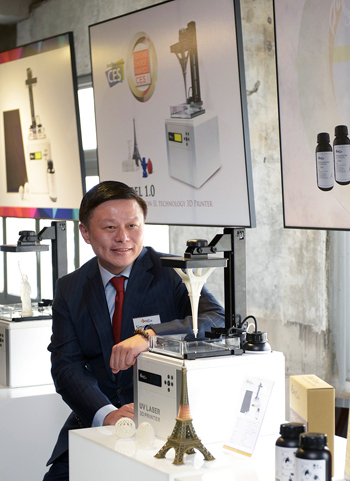
Industry: Do you enjoy Making? Looking at your portfolio (.PDF), you went to business school and then law school. Right after that, your career path took you almost straight into business. How did that happen?
Simon Shen: I started out as procurement manager for one of our subsidiaries, in parts supply. Then, I became a marketing VP, and then CEO of this company in 2008. I don’t have an engineering background. I just happened to be in the electronics business and I found 3D printing quite interesting. Because I think that in, say… 20 years, people may not buy paper printers anymore. They may be replaced by 3D printers. So, we need to develop this kind of technology no matter what. I am not a Maker or engineer, but I believe that 3D printing will be the future for many people’s lives. It is one of the technologies that can change people’s lives.
At the same time, such technologies as self-driving cars and Google Glass will also help to change people’s lives. If you think about yourself 10 years from now, coming to this place, you might be in a car without a driver. These goods will be a part of our lives… 10 years later … 15 years later. The same goes for 3D printers. They will become part of people’s daily lives. Some believe it and others don’t. But I believe it, and I am in the very industry that will help to develop these technologies.
Industry: Since you are originally from Taiwan, how do you find the differences between the 3D printing markets in Korea and Taiwan?
Simon Shen: That is a very interesting question. In the sense that both markets are at their starting point, they are very similar. I could be wrong, and maybe I am wrong, but I feel like things are moving a bit faster in Taiwan. We have been discussing 3D printing with the government and have been promoting 3D printing a lot to make the general public aware of what it is. Taiwan also adopts a lot of US culture. The US government has said that this is the third industrial revolution, and our government agrees with that. So, we try to make people aware of what 3D printing is, but I think Korea will catch up very quickly. I find the Korean market very important and it has a lot of potential.
Industry: I heard that XYZprinting has offices in Korea, Japan, China, Europe, and the US, too. How do you personally find 3D printing markets differ between Western and Eastern countries?
Simon Shen: I am still learning about other markets, and every market seems to have different traits. The US market seems to adopt tech more easily because they came up with the concept of 3D printers first. President Obama personally promoted the technology and most all Americans understand or are interested in 3D printers. Another reason is that they have a widely known DIY culture and spirit. With CNC machines, most people see 3D printers as just another tool to make things. On the other hand, Asians generally do not have popular DIY cultures; they do not have garages… so it takes time to educate the general public. So, the US market is still one of our biggest markets. DIY culture seems to be popular in European countries like Germany, too. The users in Asian countries, such as Japan, China, and Taiwan, usually have engineering or designer backgrounds.
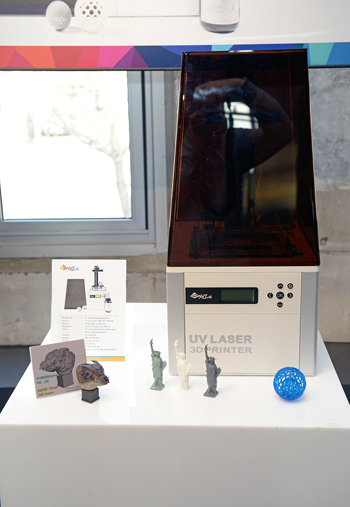
Simon Shen: We are focusing more on small business people or professionals, people with greater professional knowledge, people who need finer results and also understand the basics of 3D printing. The price of the Nobel is almost the same as other American FDM desktop 3D printers. For people who already have experience with an FDM machine, they can try the Nobel and get a better result.
Industry: Speaking of better quality, XYZprinting won the Editor’s choice award at CES 2014, and CES 2015. What would be the secret to winning that award for 2 consecutive years?
Simon Shen: Honestly, I don’t know. Last year, it was a surprise for us because we had never even done an exhibition before. CES 2014 was the first exhibition we took part in. Traditionally, we had been doing business with OEM and MES. We never needed to have a booth in an exhibition. So, last year was the first time we attended as an exhibitor. We submitted our printer and, I think we were benefited by the fact that 3D printers are a hot topic worldwide and this helped to differentiate us from the other competitors. Also, I believe that the quality of our printers, and their price, brought some attention.
Industry: In which countries do XYZprinting products get the most attention?
Simon Shen: Still the US market. We are selling the da Vinci, and da Vinci Jr. this month. It is the biggest market for us, and we will start to sell the Nobel starting in the middle of May or June. In Japan, we just started to sell the Nobel. The first shipment was already shipped out to Japan in the middle of March. The response from customers are quite positive and we are waiting for the second shipment to be shipped out very soon.
For the American market, we decided to sell the da Vinci Jr. first, and then we will start to sell the Nobel. We are preparing for the back-to-school season, so American customers can meet the Nobel in their domestic market at the end of May. In Korea, it would be the beginning of May. And, in European countries, two shipments are already done and a third one is already being shipped by boat. So, end-users should be able to get the machine probably around the beginning of this week or next week. I think many professional designers are looking for machines that use light curing technology and have a reasonable price.
Industry: This could be a bit of a sensitive issue, but according to one of our recent stories, we pointed out that some large corporations having their own proprietary filament and cartridges that are only for use with a company’s own 3D printers. And I know that, recently, XYZprinting has decided to make their proprietary cartridges refillable. What are your thoughts on this?
Simon Shen: At first, people had to buy a new cartridge to get new filament, and we realized that the empty cartridge box goes to waste. So, we had to think of ways to make the cartridge reusable. So, now, users can refill their cartridge with new filament.
I know that some people disagreed with our proprietary filament policy, but we still believe that this kind of proprietary cartridge policy is important. The reason is quite simple: You have the software, the firmware, machines, temperature controls, and materials. These are all different factors, any one of which can cause a loss of print quality. If a user has a problem with print quality, they only complain to us, the hardware manufacturer. So, if they use someone else’s filament or resin, the responsibility for the problem becomes quite vague. Everyone in the supply chain points a finger at someone else. At XYZprinting, we take the full responsibility in that we at least ask customers to use the right kind of filaments. If you check the other brand names in the US, they have open source filaments. When problems happen, some blame the filament, some blame the machines or software. Users are stuck in the middle. So, to make sure that our customers have a good printing experience, we thought, in the very beginning, that we need to provide, not just the machine, but the software, filament, and resin so that we can take full responsibility. Many customers are not professional Makers. They cannot solve all of the technical problems by themselves, so we felt we needed to take care of everything.
Industry: I can tell that XYZprinting is expanding globally at a very fast pace. As you grow, how do you find the competition in the market worldwide?
Simon Shen: Of course, every industry, every market has competitors. Every company has benchmarks. For now, this industry is still very small. And I am sure that many companies will make contributions to this industry. I do not really mind or care about my competitors. They could be our future partners, or customers. We still might do ODM for some other companies. We believe that we have our own role in the 3D printing industry. We educate people and help more people experience 3D printing. Those customers might use different printers in the future. I do not care, honestly speaking. We create more business and help build the industry itself to create more opportunities. The number of ink-jet printers that are sold yearly is about 15 million. Compared to that industry, 3D printing is still very small, but has a lot of potential.
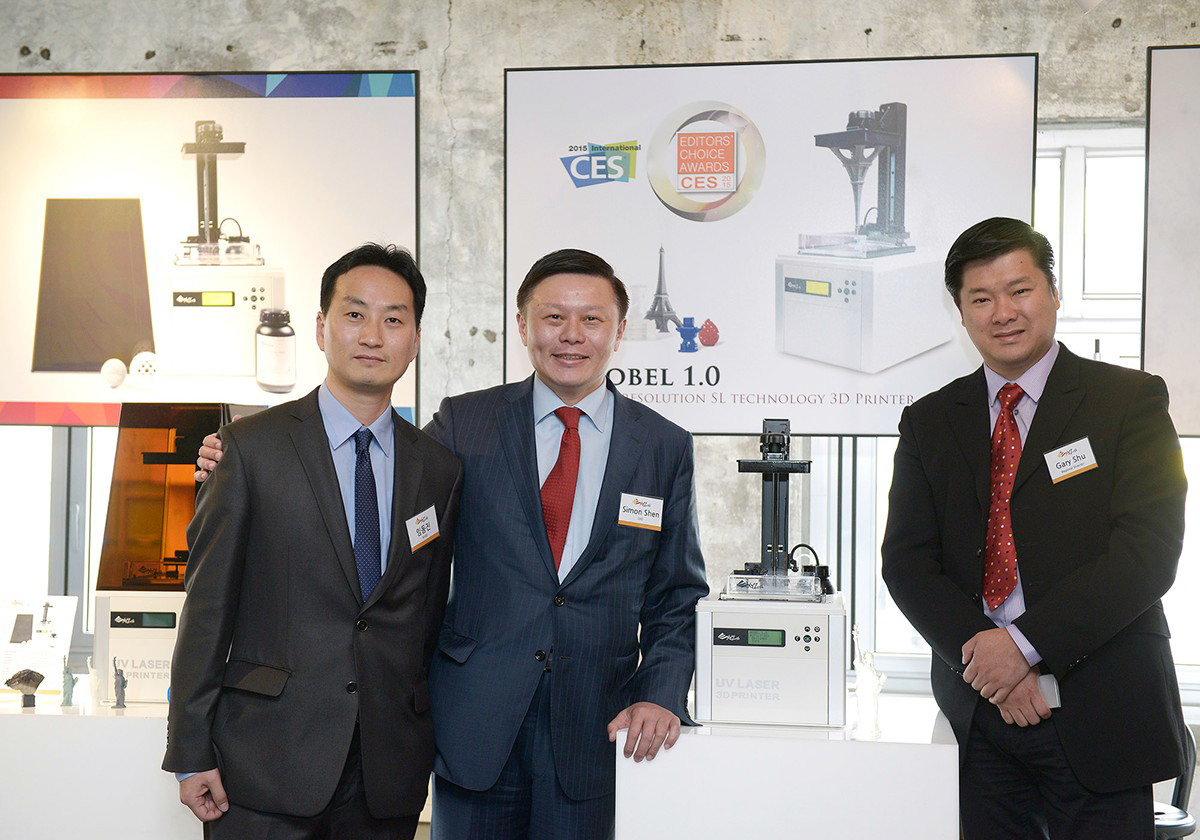
Industry: Recently in a TED talk, Carbon3D demonstrated a 3D printer that is supposedly 100 times faster than any current 3D printer on the market. How do you see this?
Simon Shen: I cannot speak for my engineers, but my understanding is that what Carbon3D is doing is a mixture of something new and something that already exists. For example, using DLP, they used the tank dropping this way (gesturing). This can be faster, but the trade-off will be wasting a lot of resin. If you go back a long time ago, our company already did something like this in a similar way. Why did we change to the way we are currently doing things? Because the other way wasted so much resin. The costs were very high. This is the drawback of that technology. However, we still are looking at ways to improve our present speed. We might have something better next year; I don’t know. I always talk about speed, multi-material printing, and full color printing. These are my three most interesting challenges. Whoever solves these problems will lead the market. And it is just a matter of time. The market and the customers will decide the pace of the changes.
Industry: On your XYZprinting website, there are quite a number of 3D models in your “Gallery” section; do you also have any specific plans to improve your STL selection and exchange experience in the Gallery session?
Simon Shen: Yes, of course. We are constantly improving our 3D printing model gallery. The concept is very simple: any of our users can upload their files and share them with other users. And we encourage designers to share their designs, too, so they can sell their designs, if they want to.
Industry: So, now you have the da Vinci series, the All-in-One, a food printer, and the da Vinci Jr. all on the market, and now the lowest-priced light-curing printer coming out. What could be the next? Is there anything that you guys are planning on doing?
Simon Shen: Yes, there are several different technologies that we are developing now. Once the product becomes mature enough, we will start to sell it on the market. Some we are already done designing, but waiting until other patents expire, and some which need more testing. We are interested in developing different technologies because we do not know which technology will lead the future. This is a very tricky part for many companies because, when you develop one technology, you need so many engineers to develop it. We do not know the result, how many we can sell. But our mission is not only to sell a machine, but to develop new technology for future use.
Industry: In your morning talk with local reporters, you mentioned a story about your 11-year-old daughter, who wanted to travel to Hong Kong to see her friend. You told her that, if she wanted to travel to Hong Kong, she had to make her own money. So, she started to upload her 3D designs to sell to 3D printer users. Since nobody bought them, her grandfather had to buy the models, so that she could travel to Hong Kong. That was a very inspiring and adorable story. As a father, and also a CEO of large 3D printing company, what do you think the role of XYZprinting will be for the next generation?
Simon Shen: For the next generation, under 18 or kids around my daughter’s age, a 3D printer is a simple machine or tool. This younger generation is part of an internet era without boundaries. People in Korea, Japan, and China all talk via the internet. They share their 3D files through the internet and will be selling their 3D printed objects through the internet. The quality of the printers is getting better. The more things being printed by 3D printers, the more industries will be replaced. Many industries or factories still need huge inventories. It takes so long, but if we can print what we want when we want, it could be a more convenient world.
Industry: What will be the direction of XYZprinting, where is it headed?
Simon Shen: Our mission is quite simple: We are participating in the 3D printing industry. I personally believe that every home and office will eventually have at least one 3D printer. And to get from here to there, I don’t know how long it’s going to take. Those obstacles that I mentioned: speed, multiple materials, and color, we are moving in those directions. Also, at the same time, we sell our machines and, as we do, we educate the general public to get them more involved in the industry.
Industry: Speaking of education, does XYZprinting have any educational program that it is working on?
Simon Shen: We just have finished what we call the da Vinci e-book to help educate people. It is written in Chinese and English. Translations into Japanese and Korean are underway. So, Korean users should be introduced to the da Vinci e-book for free soon. On the other hand, to create a curriculum for kids and schools, we need to cooperate with local teachers and education professionals. We have some American teachers who are integrating 3D printers into their science classes. This is also going on in Taiwan, but not yet in Korea. The e-book is already available in the US.
Industry: Anything to add, or any last words before we finish this interview?
Simon Shen: I want to say that we are very lucky. We are in a new era of technology. Hopefully, the da Vinci series survives in this interesting market for 10, 20, or even 30 years. But, even if it does not, it is okay. We are now contributing to this industry. People are into competition among companies, among brands, but in this new era of technology – in my daughter’s generation – people should be more open-minded to cooperate with each other, which means that a brand name will not be as important as it is now. Maybe they can make everything themselves. If that happens, why would a brand name be important?
How long will it take to get there? Nobody knows, but there will be a time when 3D printers will print other 3D printers. I don’t know. So, what is considered important now, such as brand names, may not be important in the future. I am just guessing. We need to do whatever we should do now to develop the technology, develop markets, participate in those markets and let more and more people experience 3D printing. That is our most important mission.

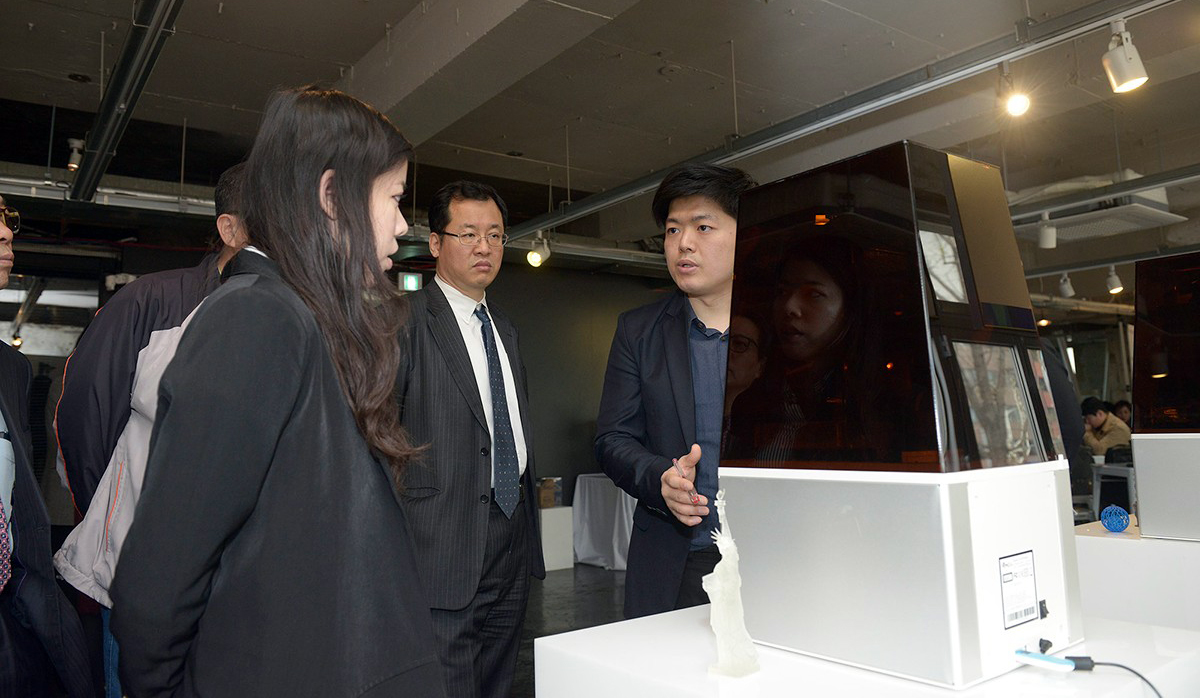
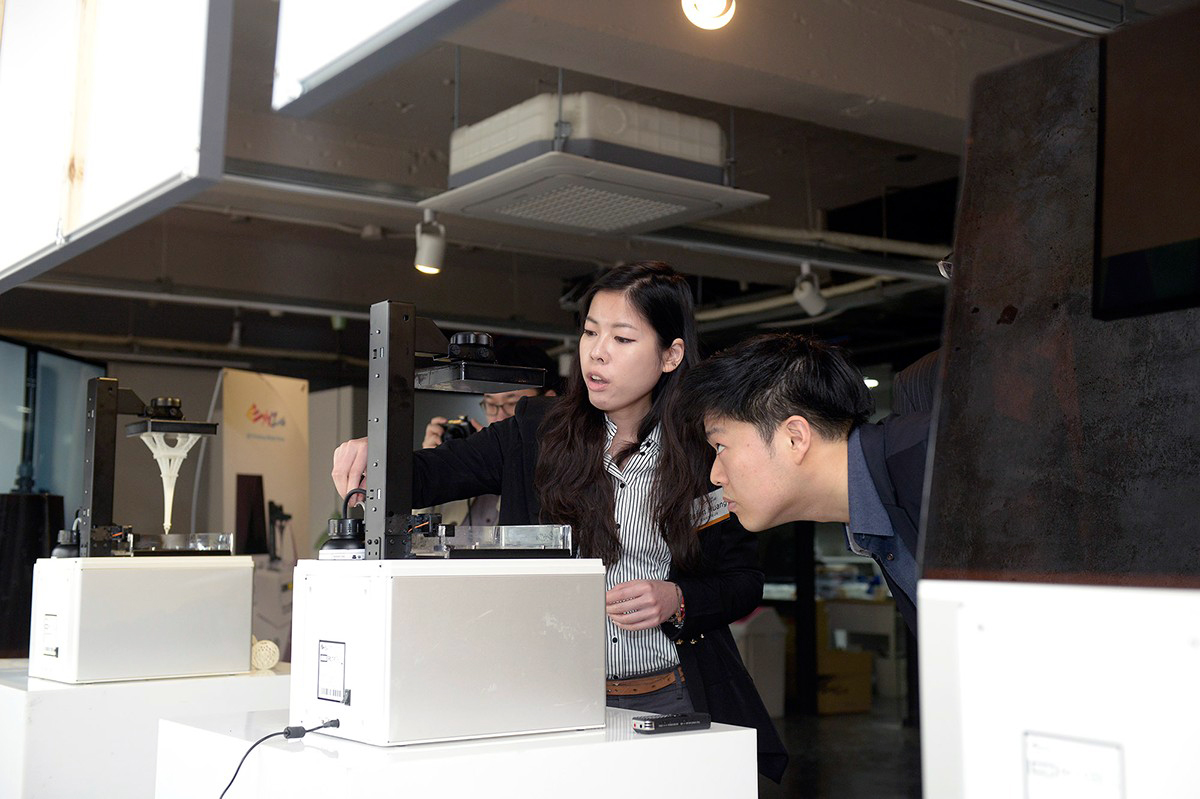
Leave A Comment